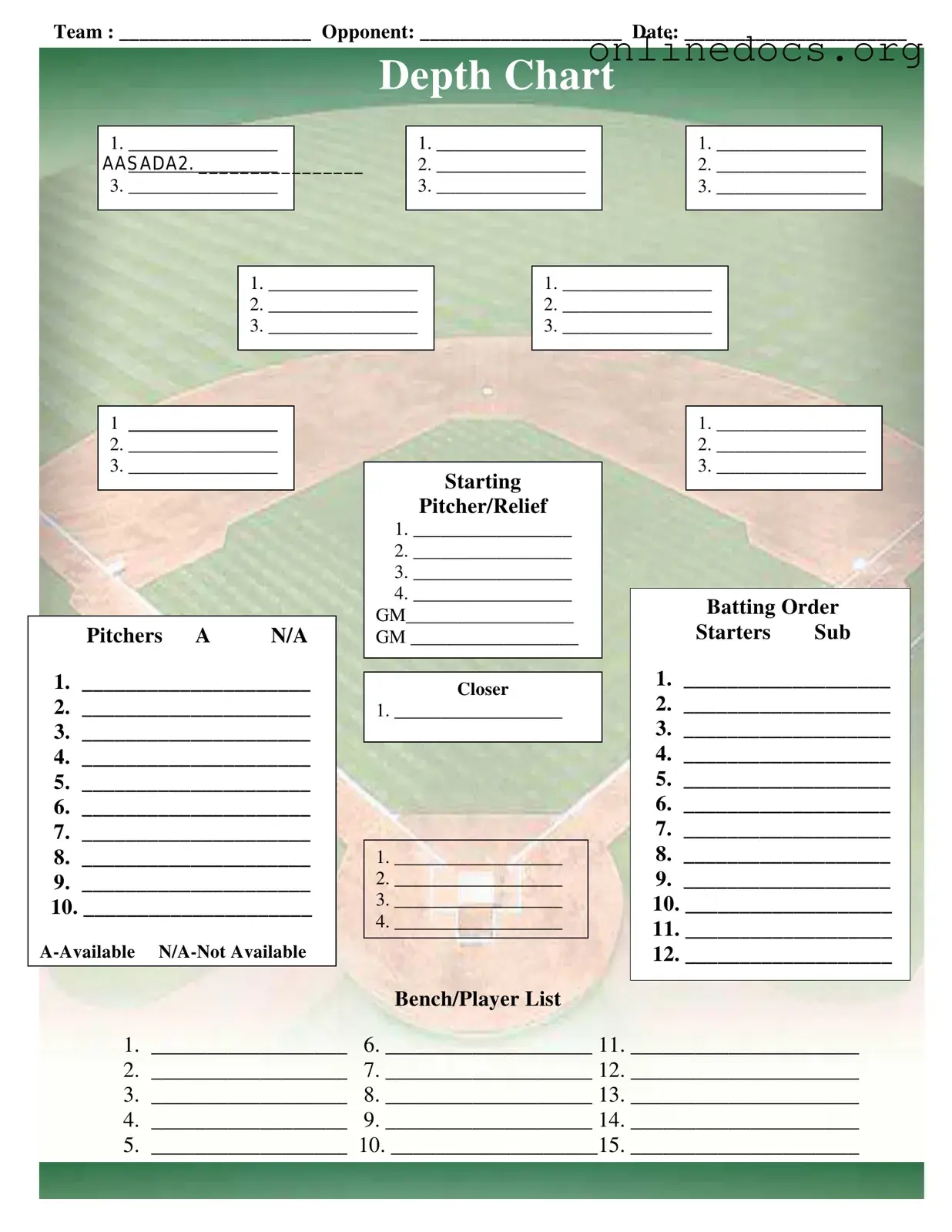The Baseball Field Lineup form shares similarities with the Roster Management form used in various sports. Both documents serve to outline the players available for a game, detailing their positions and roles. The Roster Management form typically includes player names, positions, and status (active or inactive), much like the lineup form that lists players by their batting order and depth chart. This helps coaches and managers keep track of who is available and where they will be positioned during the game.
Another document that resembles the Baseball Field Lineup form is the Game Day Lineup Card. This card is crucial for official scorekeeping and outlines the starting players and their batting order. Similar to the lineup form, the Game Day Lineup Card specifies the roles of each player, including the starting pitcher and relief options. It is often submitted to the umpire before the game begins, ensuring everyone is aware of the teams’ configurations.
The Player Availability Sheet also aligns closely with the Baseball Field Lineup form. This sheet is used to indicate which players are available for a particular game, similar to how the lineup form designates players as available or not available. Coaches use this document to make informed decisions about who can participate, ensuring that the team is adequately prepared for the match.
In addition, the Pitching Rotation Schedule bears resemblance to the Baseball Field Lineup form, particularly in how it organizes pitchers for upcoming games. This schedule outlines which pitchers are slated to start and when they will pitch, akin to how the lineup form lists starting and relief pitchers. Both documents help teams strategize their pitching plans effectively throughout the season.
The Depth Chart is another document that mirrors the Baseball Field Lineup form. It provides a visual representation of player positions and their hierarchy within the team. Like the depth chart section of the lineup form, this document categorizes players based on their skill levels and positions, helping coaches make quick decisions about substitutions and matchups during games.
Similarly, the Team Roster is a foundational document that shares characteristics with the Baseball Field Lineup form. It lists all players on a team, including their positions, contact information, and other relevant details. While the lineup form focuses specifically on game day arrangements, the team roster serves as a comprehensive reference for the entire season, ensuring that everyone is accounted for.
To effectively establish the framework for your business operations, consider utilizing an excellent Operating Agreement example that guides you through the specifics of LLC management. For more detailed information, you can check out this helpful Operating Agreement template.
The Batting Order Sheet is another document closely related to the Baseball Field Lineup form. This sheet specifically outlines the order in which players will bat during a game. Like the batting order section of the lineup form, it helps coaches plan offensive strategies and matchups against opposing pitchers, ensuring that the team maximizes its scoring potential.
The Scouting Report is also similar, as it provides insights into opposing teams and their players. Coaches often use this document to prepare their lineup based on the strengths and weaknesses of the competition. While the Baseball Field Lineup form focuses on the team’s own players, the scouting report complements it by informing strategic decisions about player matchups and game tactics.
Lastly, the Game Strategy Plan is akin to the Baseball Field Lineup form in that it outlines the approach a team will take during a game. This document may include information on player roles, pitching strategies, and offensive plans. Both documents work together to ensure that the team is aligned on their objectives and prepared for various scenarios that may arise during the game.
